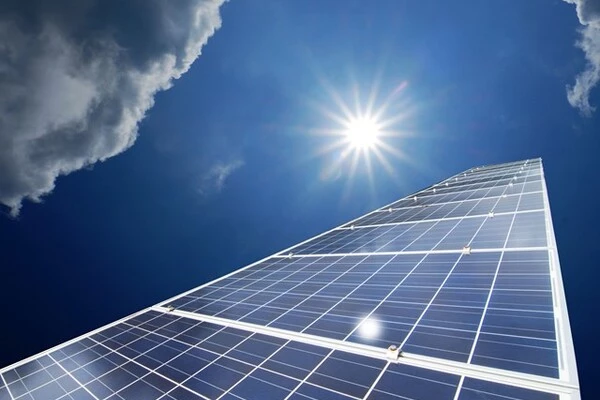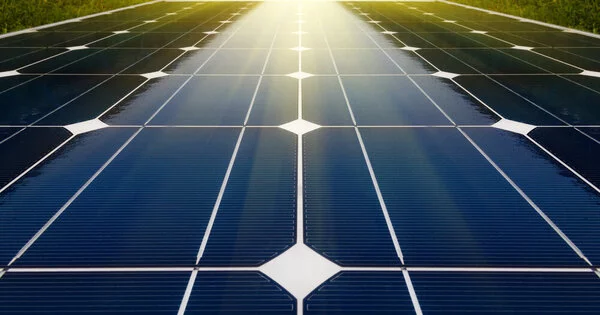Recent research has indeed revealed that solar cells can experience thermal instability, which can negatively impact their performance and lifespan. However, the same research also offers a promising path forward to address this issue.
Thermal instability in solar cells occurs when the temperature of the cell rises above its optimal range, leading to a decrease in energy conversion efficiency and even cell damage. This can happen due to a variety of factors, including exposure to high temperatures and heat generated within the cell during operation.
The researchers not only reveal the thermal instability that occurs within the interface layers of the cells, but they also offer a path forward toward reliability and efficiency for halide perovskite solar technology.
In recent years, a new type of solar technology has appeared promising. For producing electrical energy, halide perovskite solar cells are both high-performing and low-cost – two essential ingredients for any successful solar technology of the future. However, new solar cell materials must match the stability of silicon-based solar cells, which have been reliable for more than 25 years.
A team led by Juan-Pablo Correa-Baena, assistant professor in Georgia Tech’s School of Materials Sciences and Engineering, discovered that halide perovskite solar cells are less stable than previously thought. Their research not only reveals the thermal instability that occurs within the interface layers of the cells, but it also points the way forward for halide perovskite solar technology’s reliability and efficiency. Their findings, which will be featured on the cover of the journal Advanced Materials in December 2022, have immediate implications for academics and industry professionals working with perovskites in photovoltaics, a field concerned with electric currents generated by sunlight.
Our work revealed that there is concerning instability introduced by treatment with certain cations. But the good news is that, with proper engineering of the interface layer, we will see enhanced stability of this technology in the future.
Carlo Perini
Lead halide perovskite solar cells promise to convert sunlight into electrical power more efficiently. The most common method for coaxing high conversion efficiency from these cells is to coat their surfaces with large positively charged ions known as cations.
These cations are too large to fit into the perovskite atomic-scale lattice and, when deposited on the perovskite crystal, change the material’s structure at the interface. The resulting atomic-scale defects reduce the efficiency of solar cell current extraction. Despite the fact that these structural changes are well-known, research on whether the cations are stable after deposition is limited, leaving a gap in understanding of a process that could affect the long-term viability of halide perovskite solar cells.
“Our concern was that during long periods of solar cell operation the reconstruction of the interfaces would continue,” said Correa-Baena. “So, we sought to understand and demonstrate how this process happens over time.”

To conduct the experiment, the team built a sample solar device out of common perovskite films. The device has eight independent solar cells, allowing the researchers to experiment and generate data based on the performance of each cell. They studied the cation-modified interfaces of each cell before and after prolonged thermal stress using synchrotron-based X-ray characterization techniques to see how the cells would perform with and without the cation surface treatment.
The researchers first heated the pre-treated samples to 100 degrees Celsius for 40 minutes before measuring the chemical composition changes with X-ray photoelectron spectroscopy. They also used another type of X-ray technology to investigate the types of crystal structures that form on the surface of the film. The researchers were able to visualize how the cations diffuse into the lattice and how the interface structure changes when exposed to heat by combining the information from the two tools.
The researchers then used excitation correlation spectroscopy in collaboration with Carlos Silva, professor of physics and chemistry at Georgia Tech, to understand how cation-induced structural changes affect solar cell performance. The technique exposes the solar cell samples to very fast pulses of light and detects the intensity of light emitted from the film after each pulse to understand how energy from light is lost. The measurements allow the researchers to understand what kinds of surface defects are detrimental to performance.
Finally, the team correlated the changes in structure and optoelectronic properties with the differences in the solar cells’ efficiencies. They also studied the changes induced by high temperatures in two of the most used cations and observed the differences in dynamics at their interfaces.
“Our work revealed that there is concerning instability introduced by treatment with certain cations,” said Carlo Perini, a research scientist in Correa-Baena’s lab and the first author of the paper. “But the good news is that, with proper engineering of the interface layer, we will see enhanced stability of this technology in the future.”
The researchers discovered that under thermal stress, the surfaces of metal halide perovskite films treated with organic cations change in structure and composition. They discovered that the resulting atomic-scale changes at the interface can result in a significant reduction in power conversion efficiency in solar cells. Furthermore, they discovered that the speed of these changes is affected by the type of cations used, implying that stable interfaces may be achievable with proper molecule engineering.
“We hope that this work will compel researchers to test these interfaces at high temperatures and seek solutions to the instability problem,” Correa-Baena said. “This work should point scientists in the right direction, to an area where they can concentrate their efforts in order to develop more efficient and stable solar technologies.”





